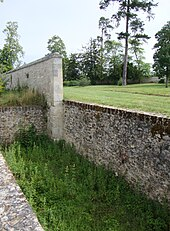| property | value |
|---|---|
| created | $=dv.current().file.ctime |
| modified | =this.modified |
| link |
Imagine tourists flocking to a famous beauty spot, only to turn around and fix their eyes on its reflection in a tiny dark mirror.
a key accessory for any circa-1700s British tourist.
The more ambitious carried glass slides in different colors, which they could use to superimpose tones on the landscape. With the help of the slide, the land could be suffused with autumnal gold or draped in blue frost; the light of day could be transformed into dawn, sunset, or moonlight.
Most importantly, the aesthetic of the picturesque trained people to look at landscapes as if they were landscape paintings
ha-ha fence
This era also witnessed the invention of the ha-ha—a fence sunken into the ground, creating the illusion of continuity between the garden and the larger landscape.
NOTE
The ha-ha
“What adds to the beauty of this garden is, that it is not bounded by walls, but by a ha-hah, which leaves you the sight of the beautiful woody country, and makes you ignorant how far the high planted walks extend.”
Due to the hidden nature of ha-has, they can pose potential injury to the public (especially considering their initial designs were to be invisible).
The enclosure of the common lands, though driven by economic profit, was often justified in aesthetic terms; the same hedges that fenced the peasants off from the common lands were lauded as “highly picturesque.”
Recently, artist Alex McKay and historian CS Matheson have created a claude mirror installation by placing a webcam opposite a 40-inch Claude mirror that is reflecting the Tintern Abbey.
